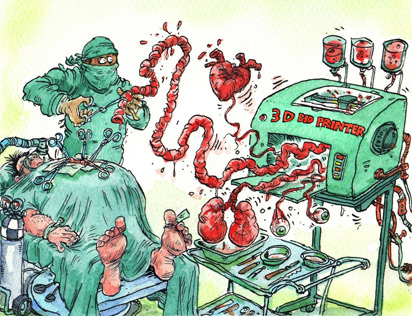
Twenty Years of Hubble.

Haunting the Web Since 1999


(Maybe Black Mesa? That was a joke, ha ha, fat chance.) Y’know, to be honest, I blame the time travelers from the future who should’ve come back and prevented these catastrophic rips in the fabric of space-time. Bang up job, you effing slackers.
“The jetpack is made from carbon fiber, with a touch of kevlar in the rotors, and generates 600 pounds of thrust. Because the center of gravity is below the ‘center of thrust’ (a notional point between the engines), it is self-righting: If the pilot lets go of the controls, he hovers steadily in one spot.” Where is my jetpack? Ah, it’s right here, for the paltry sum of $75,000-$90,000. [You can see it in action here.]
“Within 40 small craters, one to nine miles wide, they estimated 600 million metric tons of water. Perhaps most notably, ‘It has to be relatively pure,’ said Paul Spudis, the principal investigator for the instrument that made the discovery.“
By way of a friend, scientists find more evidence of lots of water on the moon. “That is significant, because the ice in these craters could be easily tapped by future lunar explorers — not just for drinking water, but also broken apart into oxygen for breathing and hydrogen for fuel.” Hmm. Maybe it’s time to start thinking of ways to get up there…
“In April, the world will celebrate the quinquagenary of SETI, the search for extraterrestrial intelligence, so it seems a good time to take stock of the silence. Three new books tackle the issue in three different ways. One, an immensely readable investigation of the SETI enterprise (with a surprising conclusion); the second, a technical guide to what we should be looking for and how; and the third, a left-field argument that the alien question has already been answered.“
In New Scientist, Michael Hanlon surveys three new books about the continuing search for alien life, and attempts to grapple with the Fermi paradox.”Today it is rare to meet an astronomer who doesn’t believe that the universe is teeming with life. There is a feeling in the air that light will soon be shed on some of science’s most fundamental questions: is Earth’s biosphere unique? Do other minds ponder the universe?“
“The change is negligible, but permanent: Each day should be 1.26 microseconds shorter, according to preliminary calculations. A microsecond is one-millionth of a second.” So, on the bright side, I guess that means we’ll all live to be a little older. The devastating 8.8 earthquake in Chile has apparently permanently shortened Earth’s day.
“Such changes aren’t unheard of. The magnitude 9.1 earthquake in 2004 that generated a killer tsunami in the Indian Ocean shortened the length of days by 6.8 microseconds. On the other hand, the length of a day also can increase. For example, if the Three Gorges reservoir in China were filled, it would hold 10 trillion gallons (40 cubic kilometers) of water. The shift of mass would lengthen days by 0.06 microsecond, scientists said.”
“The second law states that a force is proportional to an object’s mass and its acceleration. But since the 1980s, some physicists have eyed the law with suspicion, arguing that subtle changes to it at extremely small accelerations could explain the observed motion of stars in galaxies.” Also on the subject of spinning, a new experiment finds a way to test Modified Newtonian Dynamics (MOND) on Earth, which, if successful, could revise Newton’s heretofore ironclad 2nd law…and explain away the longstanding dark matter problem. (By way of my new favorite Twitter feed, @newscientist.)
“An application that lets users point a smart phone at a stranger and immediately learn about them premiered last Tuesday at the Mobile World Congress in Barcelona, Spain. Developed by The Astonishing Tribe (TAT), a Swedish mobile software and design firm, the prototype software combines computer vision, cloud computing, facial recognition, social networking, and augmented reality.“
Well, that should really facilitate the stalking (and now everyone will know right away I like sunsets and long walks on the beach…) The Atlantic‘s Derek Thompson reports in on Recognizr, a smartphone app soon likely to cause all kinds of consternation and unwanted advances in a town near you.

Also in the Brave New World dept. and by way of a friend, The Economist takes a gander at new “bioprinter” technology. “As for bigger body parts, Dr Forgacs thinks they may take many different forms, at least initially. A man-made biological substitute for a kidney, for instance, need not look like a real one or contain all its features in order to clean waste products from the bloodstream.“
“36,000 Feet: The Challenger Deep, lowest known point in the ocean. It is believed there are lower undiscovered points, as only 10% of the ocean has been mapped.” There are old, foul things in the Deep Places of the World: By way of DYFL and Lots of Co, a rather off-putting graphic of the Mariana Trench to scale. Venturing out into the Great Beyond of space always sounds exhilarating to me. But, for some reason, being that far down below the murky depths…not so much.